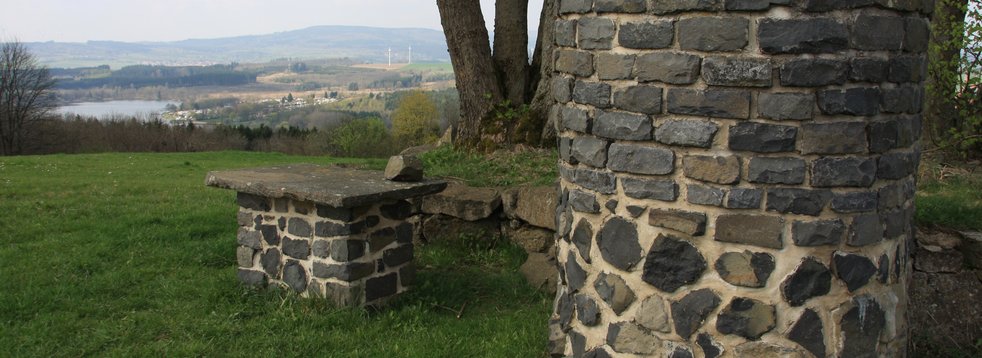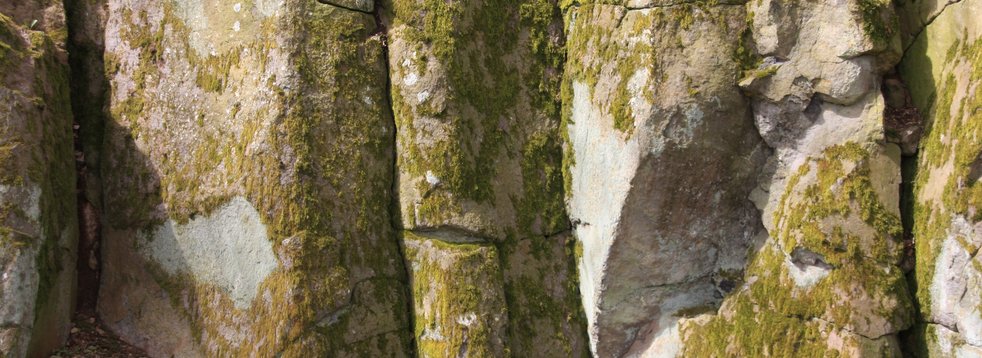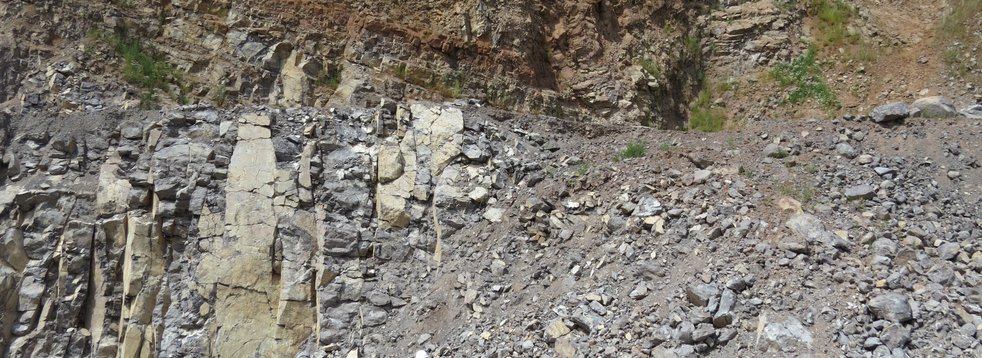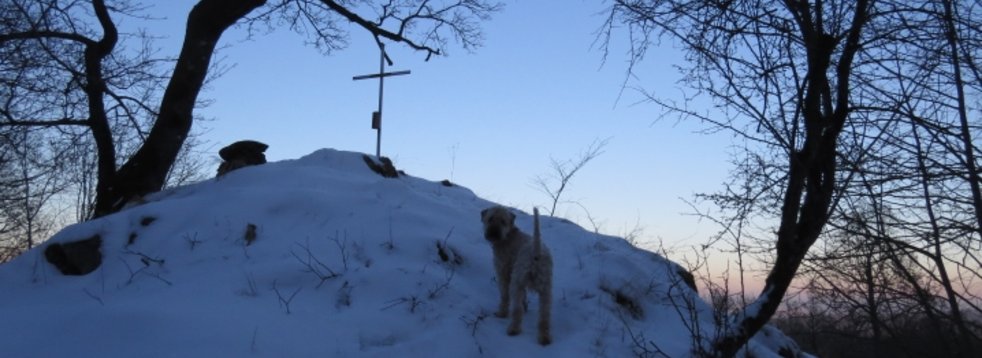Primeval amphibians in red sandstone
Do you know the oldest known inhabitants of the Vogelsberg? No, not the neighbour's grandmother.
They are primeval amphibians in the red sandstone, which drew their traces through the moist sand about 247 million years ago in the Middle Ages (Lower Triassic). They are thus among the oldest evidence of the geological development of life in Hesse.
At Schlitz - Queck two broad-snout amphibians (sclerothorax) were discovered in 1924 in a sandstone quarry. Until about 30 years ago, when skull imprints of the same genus were found near Naumburg-Heimarshausen in Northern Hesse, the Quecker find was considered unique worldwide. The approximately 80 cm long fossils of the "Panzerlurche" (Armour Ploughs) were already in decline in the red sandstone age and were quite small compared to other contemporary species. Not much of the former sandstone quarry can be seen today at the sports ground in Queck. As early as 1830 similar finds are said to have been made at the same place, which at that time were considered and called "unicorn". The finds from 1924 are now kept in the Hessian State Museum in Darmstadt.
Those who dread the journey to southern Hesse can visit the nearby Vonderau Museum in Fulda, where you can view the fossil imprints in the natural history collection and learn more about the life of these primeval animals.
Sources
Paläontologische Denkmäler in Hessen; Hess. Ministerium für Wissenschaft und Kunst und Landesamt für Denkmalpflege Hessen; Wiesbaden 2000
Bodenschätze in Flurnamen, Beilage zu den Messtischblättern, S. 77, Dr. Erwin Meyer, Gießen
GrenzWelten, Newsletter Nr. 7/2018; Project Office National Geopark GrenzWelten, Korbach
Photos: S. Jost
































